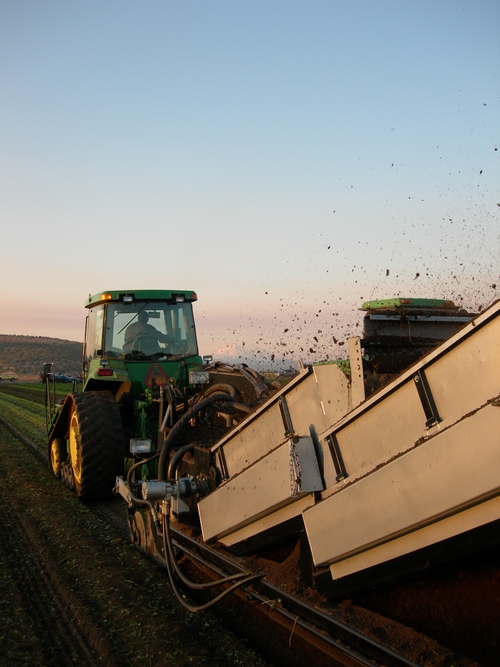Hot Days and Cold Nights:: Interpreting Chill Accumulation via the Utah Model.
Strawberries (and caneberries) rely on enough accumulation of chill to develop normally. Insufficient chill in strawberry results in lower vigor and productivity, while excessive chill can result in overly vegetative plants with again lowered productivity. This is an expansive topic, and readers can refer to other articles in this blog to familiarize themselves with the concept further.
The question we take up today is with the current spate of warm temperatures during the day in the strawberry plant production areas in Northern California, are we losing some of the accumulated chill during the night. The answer is an unequivocal “yes”.
Consider the chart below taken from the UC Davis Fruits and Nuts website which comes from the publication “Chilling Accumulation: Its Importance and Estimation” by David H. Byrne and Terry Bacon out of the Department of Horticultural Sciences at Texas A&M University:
http://fruitsandnuts.ucdavis.edu/Weather_Services/
chilling_accumulation_models/about_chilling_units/
|
The Byrne and Bacon explanation of calculations used by the Utah model: |
The Pomology Weather Services program calculations for the Utah model: |
|
1 hour below 34°F = 0.0 chill unit 1 hour 35 - 36°F = 0.5 chill units 1 hour 37 - 48°F = 1.0 chill units 1 hour 49 - 54°F = 0.5 chill units 1 hour 55 - 60°F = 0.0 chill units 1 hour 61 - 65°F = -0.5 chill units 1 hour >65°F = -1.0 chill units |
1 hour below 34°F = 0.0 chill unit 1 hour 34.01 - 36°F = 0.5 chill unit 1 hour 36.01 - 48°F = 1.0 chill unit 1 hour 48.01 - 54°F = 0.5 chill unit 1 hour 54.01 - 60°F = 0.0 chill unit 1 hour 60.01 - 65°F = -0.5 chill unit 1 hour >65.01°F = -1.0 chill unit |
Let's go to the accumulator of chill hours from Lassen Canyon Nursery to apply this to our situation today:
http://lassencanyonnursery.com/macdoel-ranch-cumulative-chilling-hours/
As of 9/22/2015, it looks like we have 32 hours (or units) below 32o F (0.0 chill units x 32 accumulated), 143 hours between 33o F and 45o F, 166 hours between 46o F and 60o F, and 177 hours over 61o F (130 from 61o F to 80o F and another 47 over 81o F). I'm assuming the interesting part of chill accumulation for Lassen is the 33o F to 45o F range, which we'll multiply by 1 for 143 chill units, then add on the less effective 46o F and 60o F of 83 chill units (166 hours x 0.5) for a total of 223 accumulated hours in Macdoel so far.
However, from this total of 223 hours accumulated we are going account for the negative effect of 177 hours over 61o F. We don't have the advantage of knowing how many hours were in the range of 60o F to 65o F for which the multiplier is only -0.5 chill units, but indulge me and let's put that amount at a quarter of the 177 hours over 61o F (177*0.25 = 44) . Meaning that (44 hours x -0.5 chill units) + (133 x -1.0 chill units) = -155 chill units.
As such, according to the Utah Model, total accumulation this year as of September 23 in Macdoel is 68 chill units (223 units - 155 units).

Nursery plant harvest in Macdoel, 2006.

